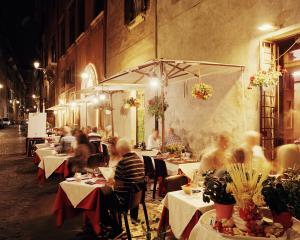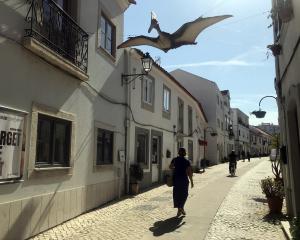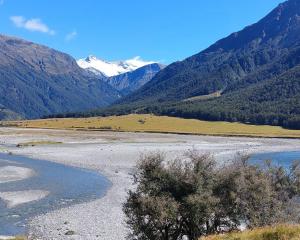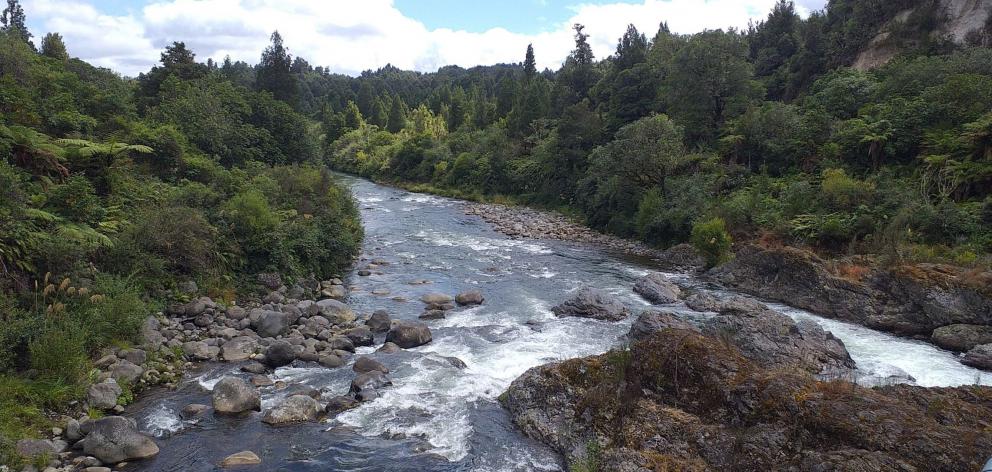
Amid the wrapround splendour of the Retaruke Valley, Retaruke Country Estate is an out-of-the-box wilderness experience, where you can enjoy exclusive use of the lodge, set in 1600ha of farm and bush just west of National Park. The irrepressible sense of the wild seclusion instantly strikes you on the drive in to the lodge.
The property is situated on Kurua Farms and its adjoining "hunting block", stretching from river flats past sheer rocky bluffs up on to an imposing plateau some 500m higher than the valley floor. The farm nails the challenge of being economic in an environmentally sustainable way by growing manuka for honey on the steeper slopes and rearing sheep and cattle on the flats, alongside the tourism endeavours from the lodge.
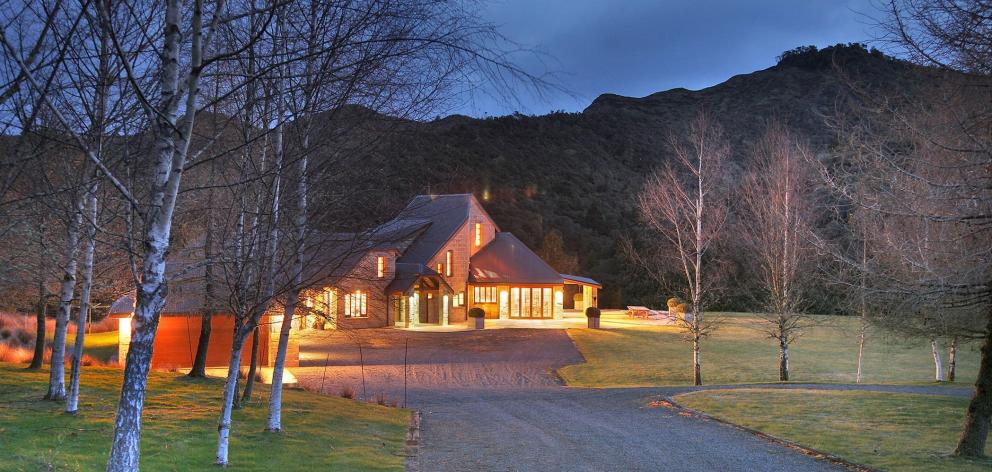
Glenn and Carolyn are the most wonderful, engaging and disarming hosts, as are their gorgeous dogs, Dodge and Boof.
Their background in conservation and ecology accentuates the pervasive ethos of sustainability at Retaruke Country Estate. There’s an active pest eradication programme in place, primarily geared at safeguarding resident kiwi and breeding whio pairs. You can sponsor your own trap. For every stay, $25 is earmarked for the purchase of traps.
Glenn led me on a spectacular tour of the estate, down to Whangairehe Stream, a tributary of the Retaruke River, where a family of whio was frolicking in the gin-clear water and fast-flowing rapids these ducks love. It was an indelible highlight to get so close to these endangered ducks.
A multitude of activities can be enjoyed at Retaruke. Mix and match as you like, depending on what whets your appetite.
You’ll definitely want to savour a sumptuous outdoor picnic high on a ridge top or beside a burbling stream, soundtracked by native bird life. There’s horse-riding for beginners or you can enjoy a more gnarly horse trek for advanced riders, revelling in the remoteness and those colossal vistas.
It’s also ideal terrain for exploring on an e-mountainbike, while the extra-intrepid can experience free range hunting for wild red and fallow deer. Trout fishing is also very popular.
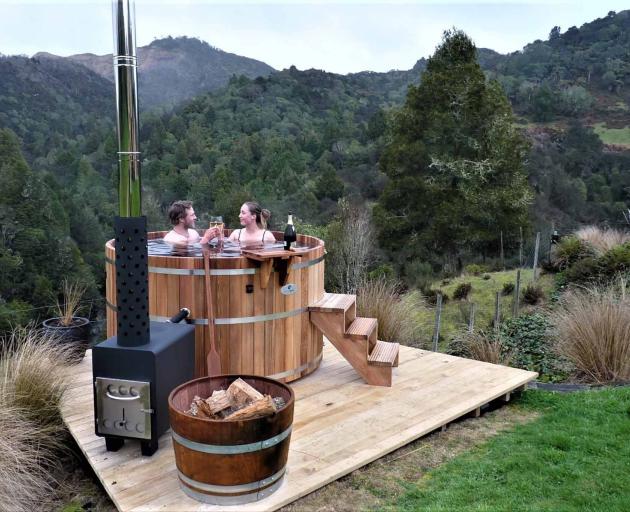
The horizon-wide views kept reducing me to audible sighs. The artfully designed lodge was built for owners Warren and Jen in 2000, crafted from honey-hued mudstone blocks shipped from Nelson, stylish and spacious.
You’ll soon feel right at home courtesy of Carolyn’s magnificent home-cooked meals, with all the trimmings. I feasted on steak, salmon, venison, the very best homemade bread, supreme summer salads and decadent desserts.
The menu changes with the seasons to reflect locally available fresh produce along with carefully aged meats traced from farm to plate.
Fancy some leg-stretchers in Tongariro National Park? Lake Rotopounamu is a local favourite. This 5km track circles a beautiful lake wrapped by native forest and adored by twitchers and tree-huggers.
Named for its greenstone hue, the lake fills a crater nestled into the western side of Mount Pihanga and formed by a landslip 10,000 years ago.
What makes the forest so special is its trove of primeval podocarps. This stand of forest is a true survivor, because it wasn’t in the pyroclastic flow zone of Taupo’s last eruption, 1800 years ago.
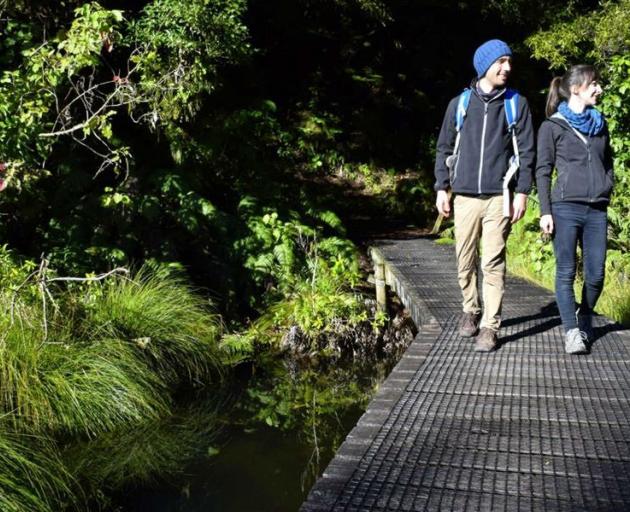
Just behind the Chateau, Taranaki Falls is a return walk for even grander waterworks. Passing through a mix of tussock, alpine shrublands and beech forest, the track wraps around the lower slopes of Ruapehu, with vintage views of Ngauruhoe’s symmetrical cone. A flock of native birds, including whiteheads and grey warblers, serenaded my stroll all the way to Taranaki Falls, tumbling 20 metres over the edge of a large andesite lava flow which erupted from Ruapehu 15,000 years ago.
I pointed the car north from National Park village, passing through Raurimu, to reach the pint-sized village of Owhango. If you’re peckish, do not miss the main street hospo gem of Blue Hill Cafe, nor its moreish lemonade scones. But my principal assignment was to meet up with Sheryl, from Rua Awa Lodge, and Sally, from Owhango Alive, to explore Ohinetonga Scenic Reserve, an unlogged native podocarp forest that was saved from the ravages of historic milling.
This gorgeous slice of wilderness is on the boundary of Tongariro Forest Park and is one of five national kiwi sanctuaries. It’s also home to a vast flock of native bird species including the whio (blue duck), dabchick, whitehead, North Island robin and kereru.
They were out in force on my visit.
Ten years ago, Owhango Alive was formed by a group of local residents concerned about the lack of birdlife in the Ohinetonga Reserve. Their tireless endeavours with plant and pest eradication are paying handsome dividends, as is evident by the now voluble birdsong and the nearly 300 traps dotting the trails.
After admiring the views of the river and Tongariro Forest from the bridge, we set off on the full 3.8km loop track around the reserve, serving up attractive scenery, a boardwalk crossing of soothing Ohinetonga Lagoon and through the stunningly beautiful forest.
A massive 600-year-old totara tree is well worth a photo-stop and a hug. In fact, I ended up canoodling with many trees on the trail. It’s official, I’m a tree-hugger.
Owhango is a former mill town that flourished in the early 1900s when the main trunk line was completed. This ease of transportation allowed a large-scale timber industry to develop. But despite the insatiable demand for timber, the rich forest within Ohinetonga Scenic Reserve was untouched because the area was appreciated for its scenic qualities and was formally recognised as a reserve a century ago. It’s a real jewel.
Find out more
- retarukecountryestate.co.nz

